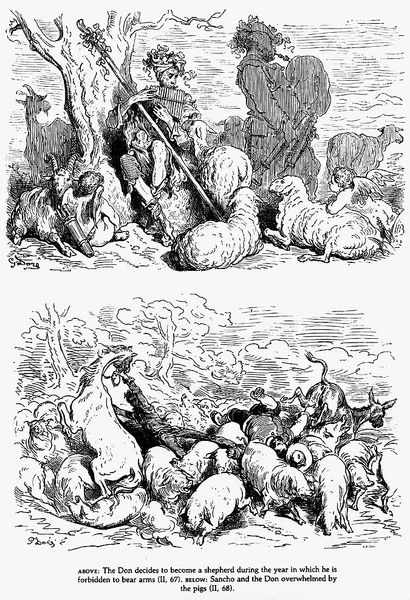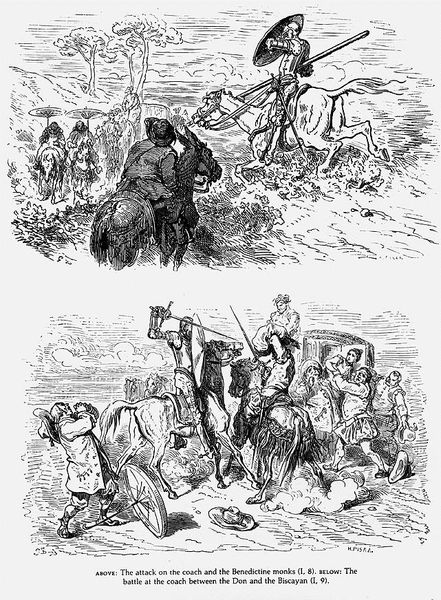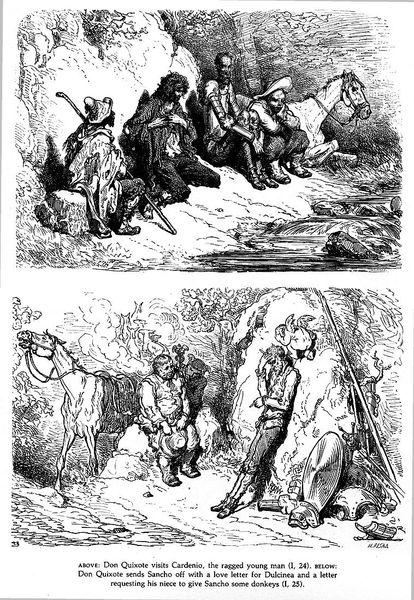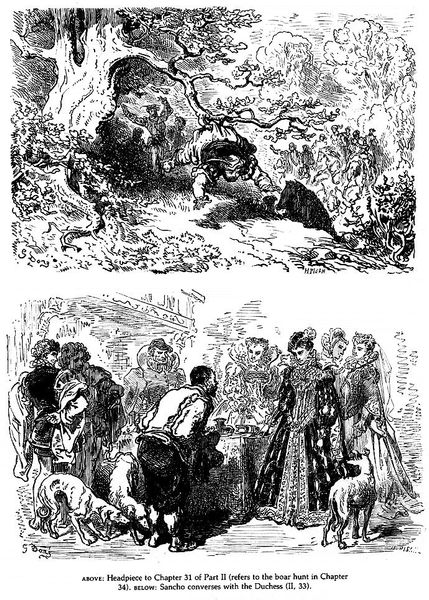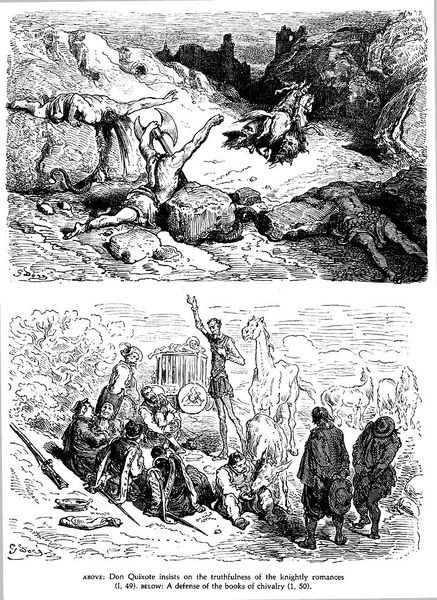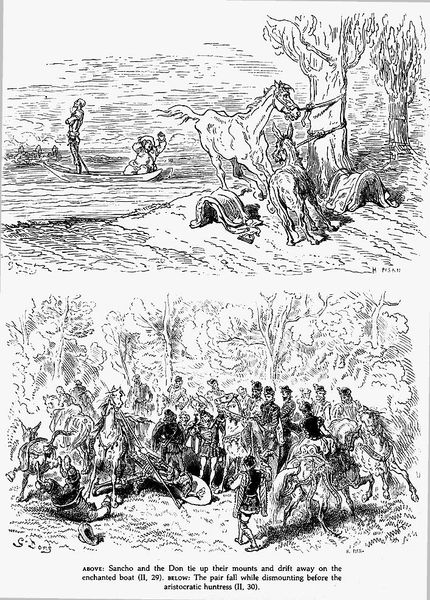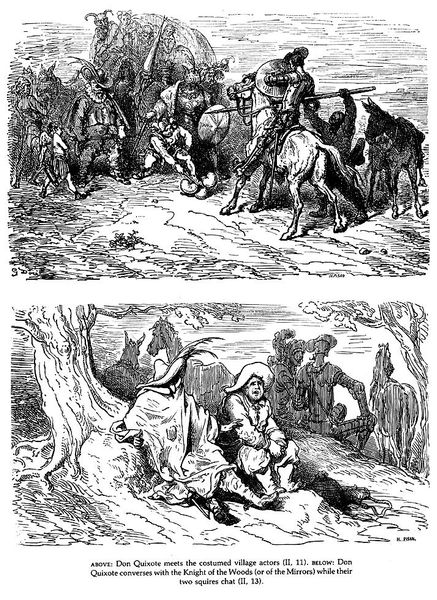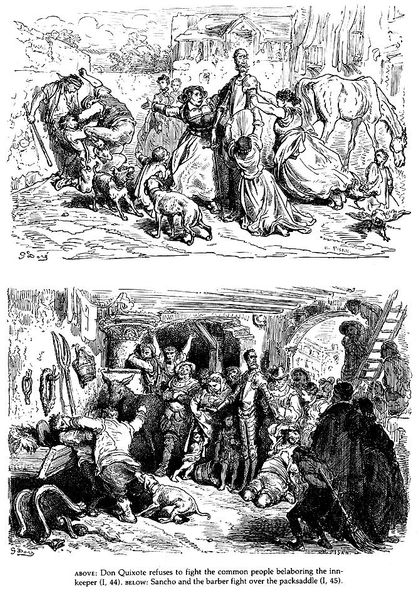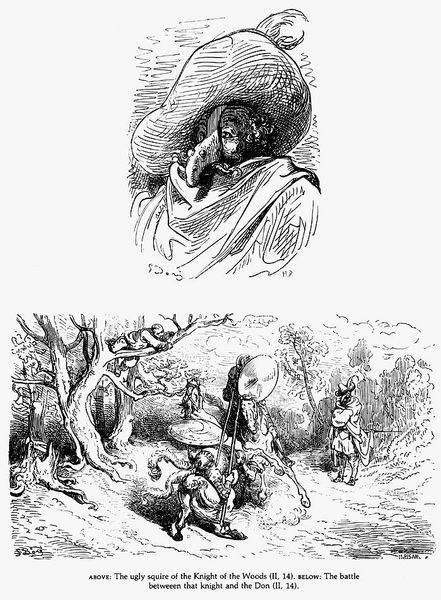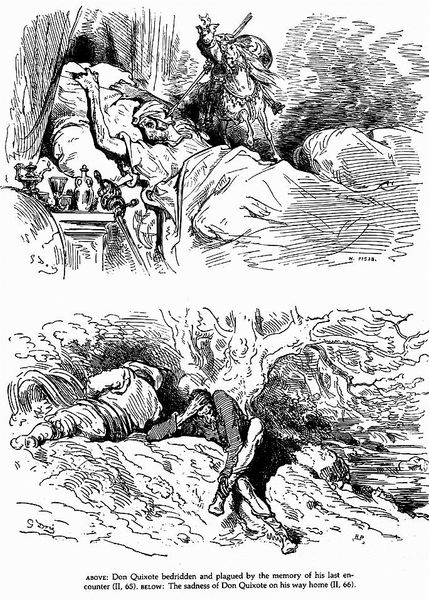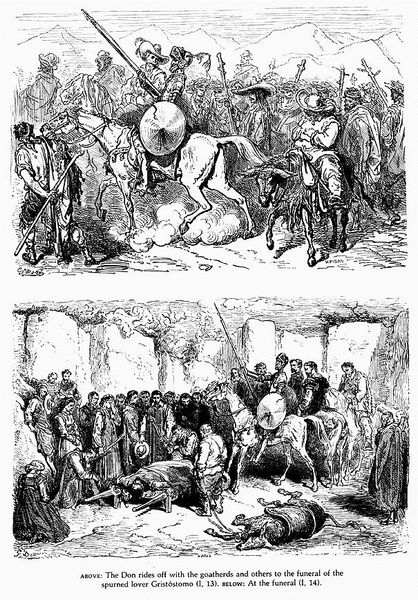
drawing, print, ink, pen
#
storyboard
#
drawing
#
comic strip sketch
#
narrative-art
#
comic strip
# print
#
pen illustration
#
figuration
#
ink
#
sketchwork
#
romanticism
#
pen work
#
pen
#
story boarding
Copyright: Public domain
Curator: Today we're looking at a print entitled "Don Quixote" by Gustave Doré, likely from the later half of the 19th century, rendered in ink. Editor: It has a somewhat surreal quality. My initial impression is of stark contrasts and implied movement, despite being a static image. Almost cartoonish, in a way that heightens the feeling of disjunction between the two panels. Curator: That starkness is crucial. Doré’s Romantic style highlights the absurdity inherent in Cervantes’ narrative, framing Quixote’s misadventures through the lens of social critique. The upper panel portrays Sancho Panza being trampled during one of Quixote’s fantastical battles, a commentary perhaps on the plight of the everyman caught in the delusions of grandeur. Editor: I agree. You can really feel the texture and almost violent nature in the first scene. The print shows the exploitation and impact of labor, visualized through poor Sancho. Curator: And the lower panel, depicting Sancho feasting with Ricote and pilgrims, brings up important questions around identity and integration. The closed eyes perhaps represent a willful blindness or forced assimilation experienced by marginalized groups. Sancho seems out of place; trapped, in this supposed moment of peace. Editor: It certainly seems a bleak image of camaraderie. Even the discarded objects surrounding them – the bowls and the discarded garments– suggest a precarious material existence, reflecting the broader economic conditions. Curator: It is powerful in how it conveys both grand historical narratives and intimate individual experiences. How it grapples with political turmoil and collective memory. Editor: Absolutely. By foregrounding the physical process and everyday existence within this historical context, Doré unveils hidden power dynamics and invites contemplation of enduring inequalities. It pushes you to reexamine the materials and making as commentary. Curator: Indeed. By situating Doré's “Don Quixote” in its socio-historical context and probing the visual strategies, we unveil critical themes of resistance, identity, and the complicated relations that defined both Cervantes's world and Doré's own. Editor: And from my viewpoint, it is the method that allows it to cut so sharply to the reality it illustrates; both images speak directly to the material repercussions of societal problems.
Comments
No comments
Be the first to comment and join the conversation on the ultimate creative platform.
